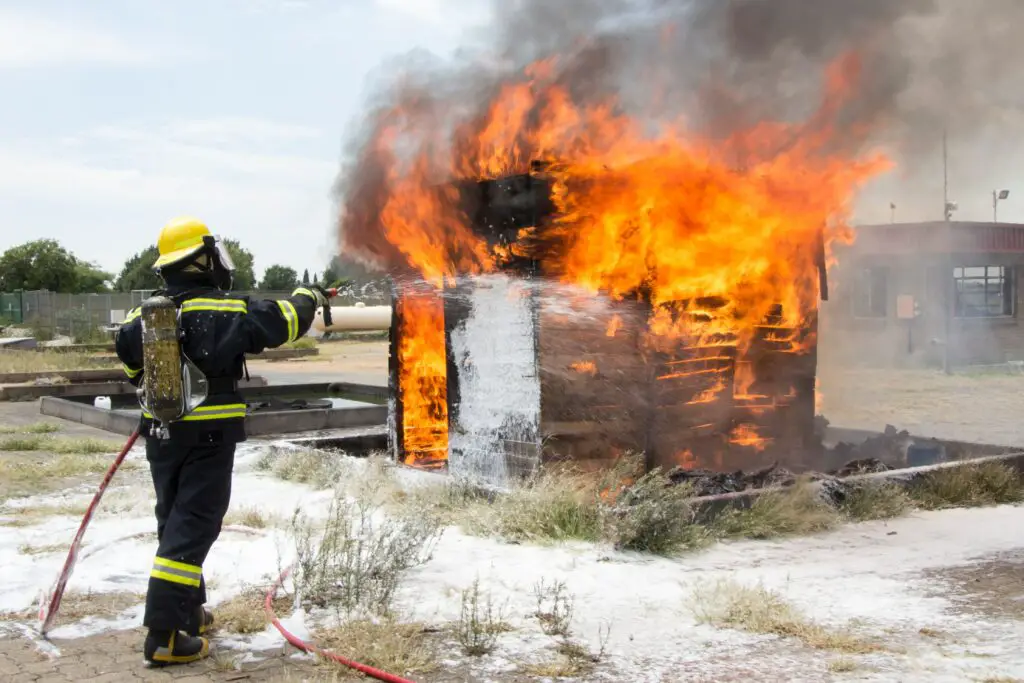Firefighters form an integral part of our society. Unwarranted fires can spread in moments if not mitigated in time. Firefighters make that possible. They undergo rigorous training to reach peak physical fitness. They have to be alert all the time, ready to hop into their trucks and go wherever duty calls. They repeatedly put their lives at stake to save others. Moreover, the equipment they use isn’t simple. A lot of them require getting acclimatized. The water hose is a very common piece of equipment that they use and it is not really that easy to get used to. Let us see How Heavy Is Firefighter Hose?

The most daunting thing about those hose pipes is that they are extremely heavy. Coupled with the force of water gushing out through them, it becomes extremely difficult to handle them. On average, a water hose for firefighters can weigh almost 200 pounds on an average. However, this is a very rough estimate. The weight of these hose pipes depends on the type of material used and the length of the hose.
Broadly divided, there are two types of hose pipes. They are the delivery hose pipes and the suction hose pipes. The delivery hose pipes are the ones that are used to put out fires by spraying the area with water.
The suction hose pipes are needed when water needs to be drawn from a static water source. The water source doesn’t have any pressure of its own and hence these specialized pipes are used to draw water from them. Examples of such sources include portable water tanks, a water body, etc. They weigh a bit more than 100 pounds in most cases.
The delivery hose pipes can be further subdivided into a few categories.
- Percolating hose: percolating hose pipes have pores all over their body. This means that the main opening is not the only place from where water comes out. Percolating hose pipes have specific uses. They are normally used to fight fires in the woods. They weigh around 1.7 pounds. These are also called forestry hoses. They are made light because it is easier to deal with them in forest settings. The firefighters have to manoeuvre through difficult terrains and different flora. Hence, a lightweight hose serves the purpose better.
- Non-percolating hose: these are better suited for any firefighting situation than percolating hose pipes. They have a thick coating that is not porous. This arrangement helps retain more water and hence helps put out fires quicker and more efficiently. Further subdivided, they can be classified into:
- Attack hose pipes: these pipes are 50 feet tall as a rule. They are tough and very limber. They can be bent into a lot of angles as and when needed without rupturing the thick exterior coating of fabric. The attack hose can have a minimum of 1.5-inch diameter. Its maximum diameter can be 3 inches. They weigh around 20 pounds at maximum length. When filled with water, their weight increases to more than 260 pounds.
- Supply-relay pipes: these pipes are much wider than the attack hose pipes. Their exterior coating is made up of thick durable fibre as well. Their main advantage is that they can transport water over long distances. If there is a water source, for example, a hydrant at a place far away from the point of action, these pipes are used. They can draw the liquid from far away and spray with greater force. Their minimum diameter is 3 inches. At most, they can have a 5-inch diameter. They are 100 feet tall. Their length is another reason why they can transport water over such long distances. They are also designed to withstand greater internal force from the gushing water. They weigh about 100 pounds. However, their weight almost increases tenfold when they are filled with water. Their weight is almost 930 pounds when full of water.
- Booster hose pipes: they are 100 feet in length. They are attached to the fire truck. They are generally used in emergency situations where no other options are left. They are also used to extinguish small fires. However, they are not very tough. Hence, they should be used while they are mounted on the truck. They should not be heaved across the ground from one place to another as it may cause wear and tear. They have small diameters which range from ¾ th of an inch to 1 inch. However, they are operated at much higher pressures than the ones mentioned before. They can weigh up to 30 pounds. When filled with water, they weigh around 100 pounds.
Conclusion
Firefighting is an extremely daunting task in itself. Not only do the firefighters have to brave their lives to put out fires, but they also have to learn other skills too. Mostly, climbing tall ladders and ledges to reach higher parts of buildings faster for rescuing trapped people. To do that with heavy equipment like their fire hose pipes is even more challenging. Weighing more than 100 pounds in most cases, it takes more than one person to handle the pipe and the force at which it releases water. This makes the job that firefighters do even more credible being lauded.


